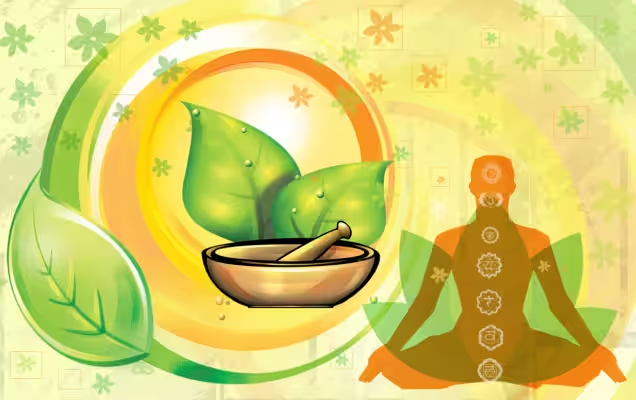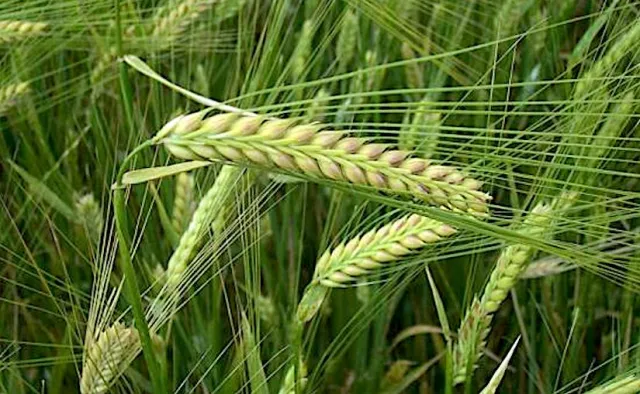Share this Article

Ayurveda, an ancient system of natural healing that originated in India over 5,000 years ago, plays a vital role in Nepalese cooking and wellness. Rooted in balance, healing, and holistic well-being, Ayurveda influences Nepali food choices, herbal remedies, and daily lifestyle practices. This article explores how Ayurveda shapes Nepalese cuisine, traditional healing methods, and modern wellness practices.
1. Understanding Ayurveda: The Science of Life
A. The Three Doshas: Balancing Energy
Ayurveda is based on the concept of three doshas, or energy types, that influence a person’s physical, mental, and emotional health:
- Vata (Air & Space): Governs movement, digestion, and creativity. Imbalance leads to anxiety, dryness, and digestive issues.
- Pitta (Fire & Water): Controls metabolism, energy, and intelligence. Imbalance causes inflammation, anger, and acidity.
- Kapha (Earth & Water): Manages strength, immunity, and stability. Imbalance results in sluggishness, weight gain, and congestion.
Ayurvedic cooking in Nepal is designed to balance these doshas using specific foods, herbs, and spices. For example, warming spices like ginger and black pepper are used to balance Vata, while cooling herbs like coriander soothe Pitta.
2. Ayurvedic Influence on Nepalese Cooking
A. Use of Healing Spices and Herbs
Nepali cuisine incorporates Ayurvedic spices that enhance both flavor and health:
- Turmeric (Haldi): Known for its anti-inflammatory properties, turmeric boosts immunity and aids digestion. It is a staple in Nepalese curries and soups.
- Ginger (Aduwa): Used to stimulate digestion, reduce nausea, and warm the body, ginger is ideal for balancing Vata. It is commonly added to teas and stir-fries.
- Cumin (Jeera): Aids digestion and detoxification, cumin is often used in lentil dishes and vegetable curries.
- Fenugreek (Methi): Balances blood sugar and enhances metabolism. Fenugreek seeds and leaves are used in soups and pickles.
- Coriander (Dhaniya): With its cooling effect, coriander soothes Pitta imbalances. It is a key ingredient in chutneys and salads.
- Black Pepper (Marich): Improves nutrient absorption and metabolism. Black pepper is added to almost every savory dish in Nepal.
B. Ayurvedic Superfoods in Nepalese Diet
Nepalese food naturally includes Ayurvedic superfoods that support health:
- Ghee (Clarified Butter): Strengthens digestion and nourishes the brain and skin. Ghee is used in cooking and as a topping for rice and lentils.
- Lentils (Daal): High in protein, lentils balance all three doshas and are a staple in Nepalese meals.
- Mung Beans (Mung Daal): Detoxifying and easy to digest, mung beans are often used in soups and porridges.
- Millets (Kodo, Jwano): Rich in fiber, millets support digestion and are gluten-free. They are used in traditional flatbreads and porridges.
- Yogurt (Dahi): A probiotic food, yogurt improves gut health and balances Pitta. It is often served as a side dish or in drinks like lassi.
- Honey (Madhu): A natural detoxifier and energy booster, honey is used in teas and desserts.
C. Mindful Cooking: The Ayurvedic Way
- Cooking is considered a sacred process in Ayurveda, with positive energy and intention infused into food.
- Fresh, seasonal, and locally grown ingredients are preferred over processed foods.
- Cooking methods like steaming, slow-cooking, and roasting preserve nutrients and healing properties.
3. Ayurvedic Influence on Nepalese Wellness Practices
A. Herbal Teas and Tonics
In Nepal, Ayurvedic herbal teas are consumed daily for wellness:
- Tulsi (Holy Basil) Tea: Strengthens immunity and reduces stress. Tulsi is often grown in home gardens and used fresh.
- Ginger-Lemon Tea: Aids digestion and fights colds. This tea is a popular remedy during winter.
- Cinnamon Tea: Regulates blood sugar and warms the body. Cinnamon is often paired with honey for added benefits.
B. Ayurvedic Detox Practices in Nepal
- Jwano Ko Jhol (Fenugreek Soup): Given to new mothers for postpartum healing, this soup is rich in nutrients and aids recovery.
- Besar Pani (Turmeric Water): A simple detox drink, turmeric water cleanses toxins and boosts immunity.
- Triphala (Amla, Haritaki, Bibhitaki): A popular Ayurvedic herbal formula for digestion and detoxification. Triphala is often taken as a powder or tablet.
C. Daily Wellness Routines (Dinacharya)
Nepalese traditional lifestyle follows Ayurvedic daily habits for well-being:
- Tongue Scraping (Jihva Prakshalan): Removes toxins from the mouth, promoting oral hygiene.
- Oil Pulling (Gandusha): Swishing coconut or sesame oil for 10-15 minutes improves oral and gut health.
- Sun Salutations (Surya Namaskar): A morning yoga ritual that boosts energy and circulation.
4. Ayurveda in Modern Nepal: A Growing Trend
- Ayurvedic wellness resorts in Nepal offer detox retreats, herbal treatments, and yoga. These resorts attract both locals and international visitors seeking holistic healing.
- Ayurvedic medicine is widely used in rural Nepal for treating common ailments like colds, fevers, and digestive problems.
- Many modern cafes and restaurants in Nepal now include Ayurvedic herbal drinks, organic foods, and health-conscious meals, reflecting a growing interest in wellness.
Conclusion
Ayurveda’s influence on Nepalese cooking and wellness is profound, shaping the way people eat, heal, and live. From the use of healing spices and superfoods in traditional dishes to daily wellness routines and herbal remedies, Ayurveda offers a holistic approach to health that resonates deeply with Nepalese culture. As modern Nepal embraces Ayurveda through wellness resorts, organic cafes, and herbal treatments, this ancient science continues to thrive, blending tradition with contemporary lifestyles. By integrating Ayurvedic principles into their daily lives, Nepalese people honor their heritage while promoting balance, health, and well-being for future generations.
Categories:
Medicinal Plants of Nepal
Tags:
Balancing Energy
,
The Science of Life







